Transportation management in logistics is a system for managing transportation that means providing end-to-end delivery. Modern logistics companies use fully capable transport management systems to improve orientation in their supply chain and foster better conditions for the flow of goods within their network.
Deploying advanced TMS solutions in logistics processes minimizes errors and discrepancies while saving companies from financial losses. Companies can secure their business operations and better protect their reputations. The latest Grand View Research has shown that the TMS system market was valued at USD 13.61 billion in 2023, with a strong growth forecast for 2025 and after. Moreover, the same report indicates that the market is expected to grow at a compound annual growth rate (CAGR) of 17.4% from 2024 to 2030.
Adapting TMS systems for logistics has become much easier for small and medium-sized companies than ever. The on-premise segment accounted for the US's largest market share, over 56.85%, in 2023. Another survey found that 45% of APAC logistics companies utilize shipment monitoring.
So, the use of TMS system modules and their functionalities is very broad worldwide, regardless of whether it's EMEA, APAC, etc. As we also said, you don't have to be a big logistics company to use TMS. This article has three key messages about which functionalities TMS combines and how cost-efficient its deployment can be with custom transportation software development. See more in our article!
Intersection between logistics and transportation management system
Logistics is highly dependent on transportation but also combines elements of intralogistics, which we should remember as all means related to internal transportation in warehouses. So, thinking about transportation in the context of logistics, at the very beginning, we can already spot many intersections. It's important to show where TMS system functionalities play a role in logistics.
Here's our breakdown of where TMS systems are particularly impactful logistics:
Transportation planning and optimization supply chain
Route optimization. The TMS system helps determine the most efficient delivery route. When we have several logistics facilities where our consignment needs to be unloaded, factors like distance are crucial to understanding the loading approach of each pallet on the trailer. It minimizes transportation time, related to unloading time if pallets are placed in the wrong order in the trailer.
Load consolidation. TMS identifies opportunities to combine multiple shipments into one load. You can directly oversee maximizing vehicle capacity and reducing transportation shipping costs. Because some orders, especially for air cargo, can be collected and stored at the airport one or two days before shipping, TMS can help shrink the load dedicated to some destinations even at that point.
Mode selection. TMS assists in selecting the most suitable mode of transportation. You can directly act with some procurement steps and choose between truck, rail, air, or sea based on cost, speed, and capacity. It is how TMS helps you measure market fluctuation based on gathered pricing. Logistics is important because you can plan your intermodal transport and order containers directly to the warehouse based on TMS modules.
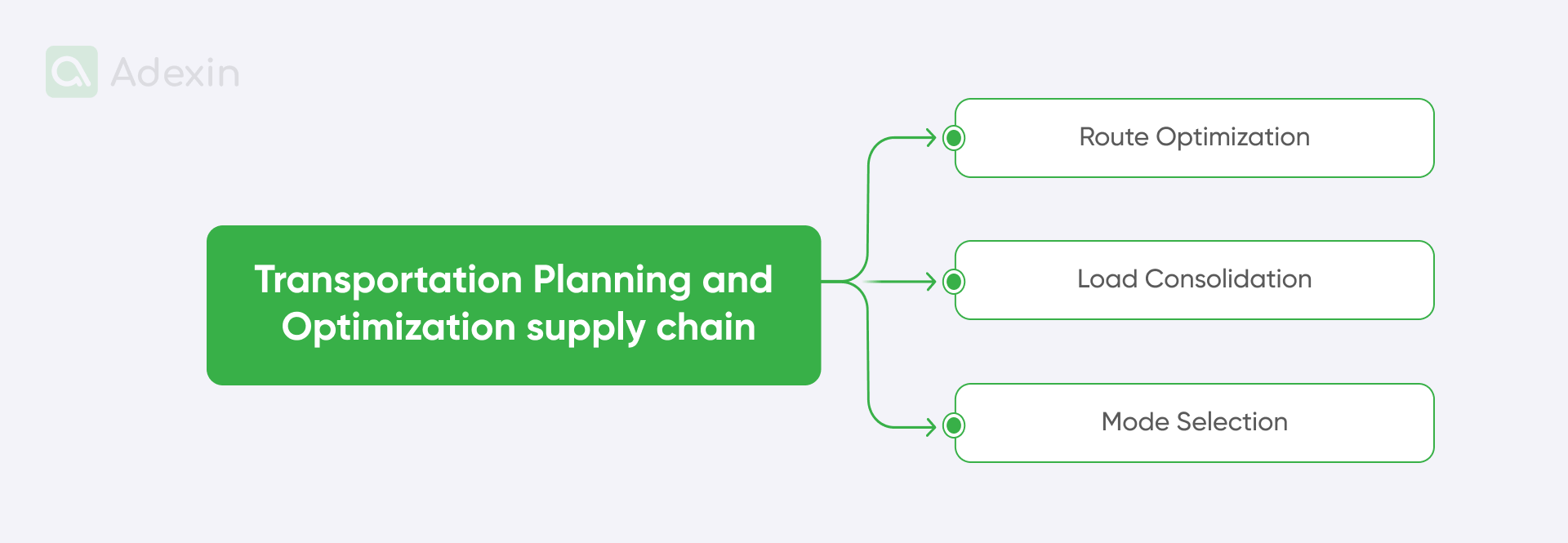
Shipment execution and tracking
Carrier selection. TMS facilitates the selection of the most appropriate carrier based on factors like cost, service level agreements (SLAs), and capacity. The last one is the most relevant to logistics, as you can assess what kind of trailer you need for your load. Based on this, you can get the right transport mode at your warehouse dock.
Shipment scheduling. TMS enables efficient pickup and delivery scheduling. You can optimize resource allocation and ensure timely execution within your logistics. This means, among other things, that logistics operators can better oversee their daily operations to load on time.
Real-time tracking. TMS provides real-time visibility into the location and status of shipments, allowing for proactive monitoring and issue resolution. You can improve your ETA delivery, which is important for forecasting timely delivery to other warehouses.
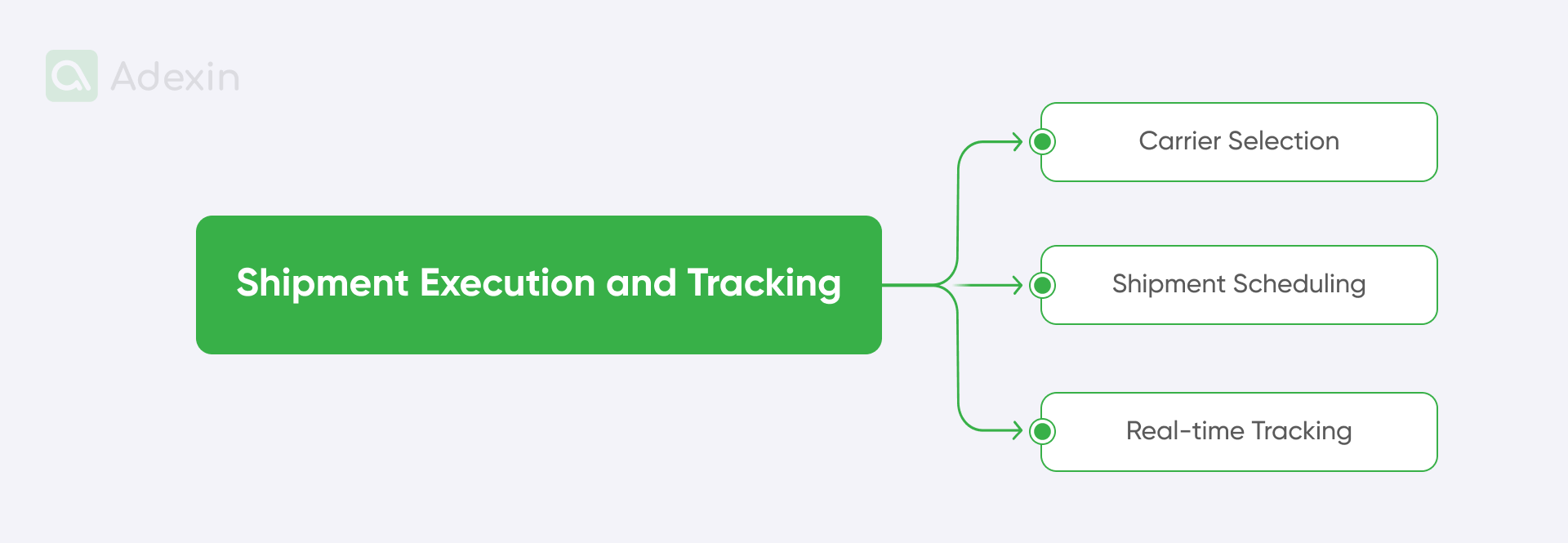
Documentation and compliance
Document generation. TMS automates the creation of various shipping documents, such as bills of lading, commercial invoices, and customs declarations, reducing manual effort and errors. You can also use TMS packing lists to prepare accurate loads.
Cost tracking. TMS tracks transportation costs. It may include carrier fees, fuel unnecessary expenses, and additional charges. Basically, on these metrics, you can also asses your providing insights into overall logistics expenditure.
Performance analysis. TMS provides detailed analytics on key performance indicators (KPIs), such as on-time delivery rates, carrier performance, and cost savings per shipment. As has already been said, this data is now applied to prepare forecasts and calculations.
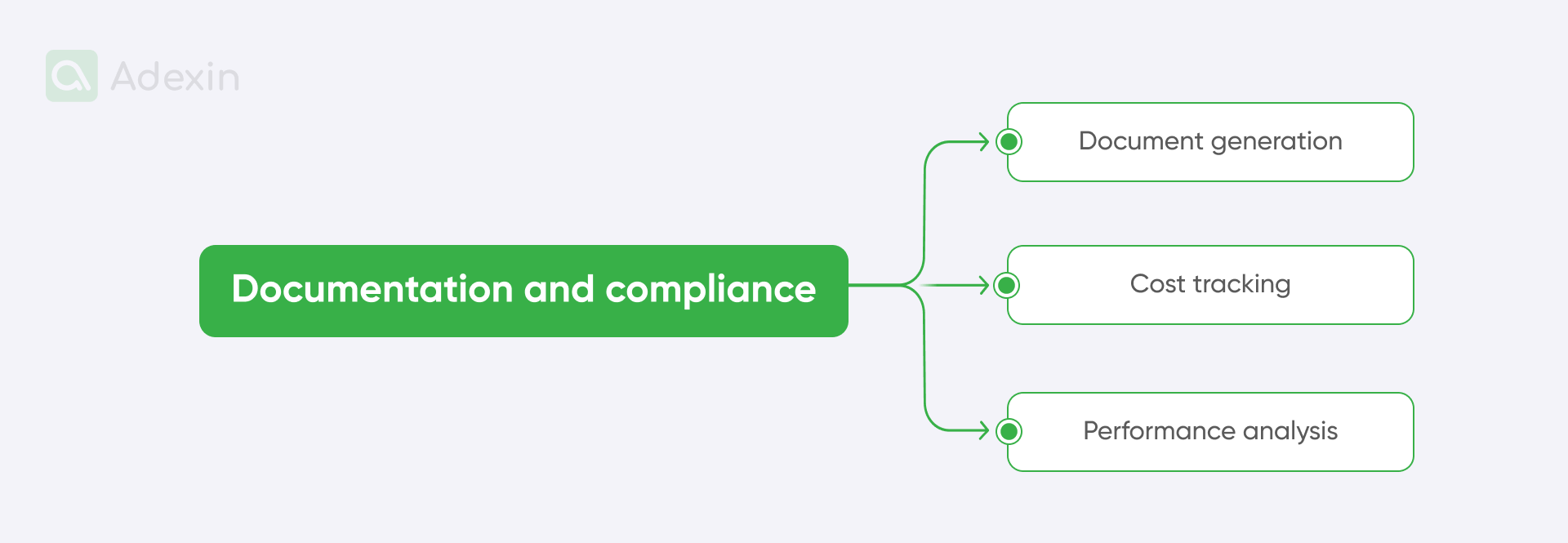
Customer service and collaboration
Single platform. TMS enables customers to track their shipments. It works on both sides, as the logistics warehouse team can use TMS to update shipments directly from the floor. It gives customers access to real-time updates and proactive notifications.
Collaboration. TMS facilitates seamless collaboration between shippers, carriers, and other stakeholders. An example can be the customs office, which might be closely responsible for dealing with international freight much faster while its systems are integrated with local TMS.
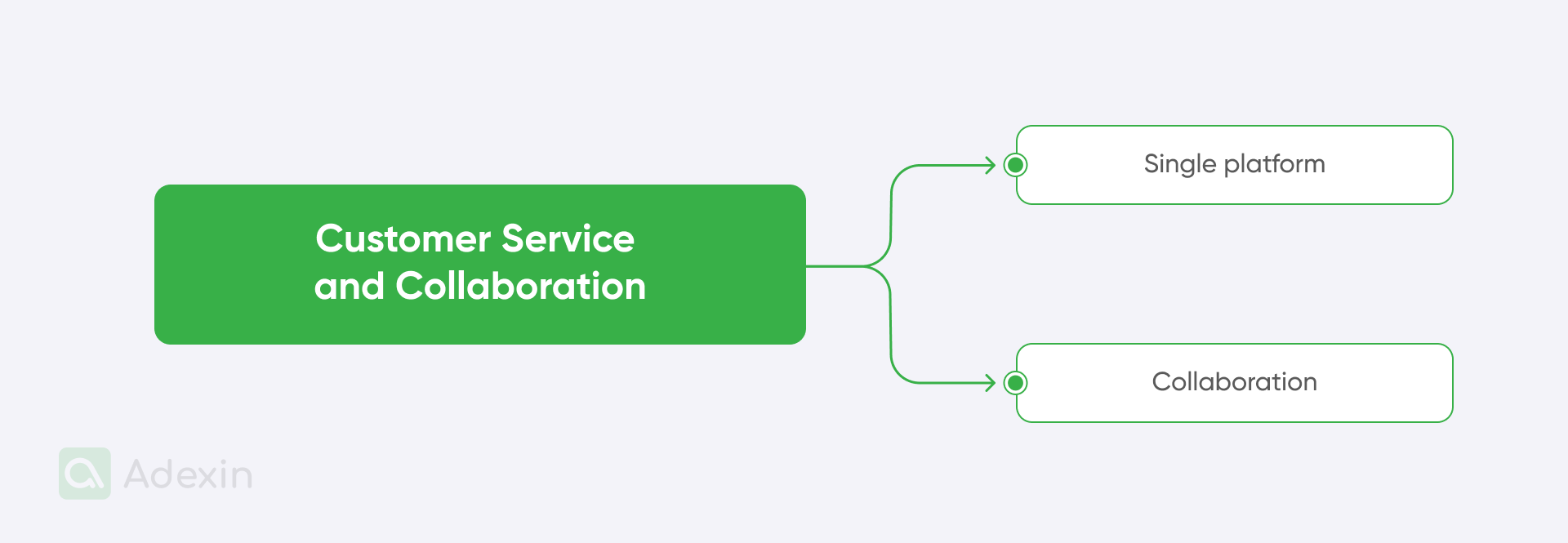
Custom TMS software development in logistics
Internal logistics management and transportation for logistics implicate two areas that cannot fall apart. Despite the different range of operations, the touchpoints are strictly correlated. No consignment can be shipped without further warehouse coordination with the outbound department, where dock scheduling is crucial for the timely processing of shipments. It is one example of why logistics integration with a TMS system is crucial.
The modern TMS system can combine various modules, and this is how you can achieve competitive advantages because it can relate to transport planning on behalf of warehouse and logistics operations. Nevertheless, finding a TMS system that could partially cover your shipping operations in the warehouse is difficult.
By this, we understand this kind of integration where your operations (OPS) in the warehouse can, in one way or another, connect what your people are doing on the warehouse floor. Mostly, TMS systems developed as off-the-shelf solutions and offered in the subscription model SaaS (Software-as-a-Service) don't provide full capabilities. However, many more downsides to the TMS system being offered as off-the-shelf.
At Adexin, as a TMS provider, we see this downside as an opportunity. In modern logistics, you want to have a deep connection between a TMS system and a warehouse management system (WMS), and mostly, if you're a small or medium-sized business, it doesn't apply.
However, we offer custom software development, which is truly beneficial for small and medium-sized businesses as we can build a completely from-the-bottom TMS system that can include modules for the integration of warehouse operations related to dock scheduling, load planning, and much more. So, this can also be considered even if you want to think about your intralogistics.
Need help with document management systems development?
Learn how we can boost your business processes
Explore moreAbove, we emphasized that document management is a vast element of a transportation management system, and our expertise with this architecture can benefit your logistics. Logistics also requires digital document management systems. Stepping back to the transportation management system landscape, as we talked about the benefits of custom software development, we want to help you understand that since 2025, implementing a TMS system based on custom software might be easier than in previous years.
What you need at a very early stage is to find a partner who understands your logistics. We have these capabilities as we hire logistics experts in our marketing team and consultants. So, this is how we can provide the most reliable solutions.
Let's take a look at one of our customers eTEU, an advanced digital platform revolutionizing document management. By simplifying document creation, editing, and transfer, eTEU streamlines workflows and improves operational efficiency. In contrast to traditional storage solutions, eTEU offers a comprehensive solution that ensures efficient, secure, and compliant management of documentation workflows.
Key features include the following:
eTEU enables transportation and logistics companies to undergo a phased digital transformation, minimizing interruptions and maximizing efficiency.
By partnering with eTEU, companies can avoid the complexity of launching a large-scale digital transformation project.
Undoubtedly, in such a digital transformation process, it is very important to assess the limits of the possibilities and allocate resources effectively. Any project can move faster along the roadmap in the case of an externally dedicated partnership. You can focus on core competencies and achieve a quick launch by outsourcing certain tasks to Adexin, as in the case of eTEU.
Top 8 steps on how to start with TMS implementation
You'll need several key elements to implement a transportation management system (TMS) successfully:
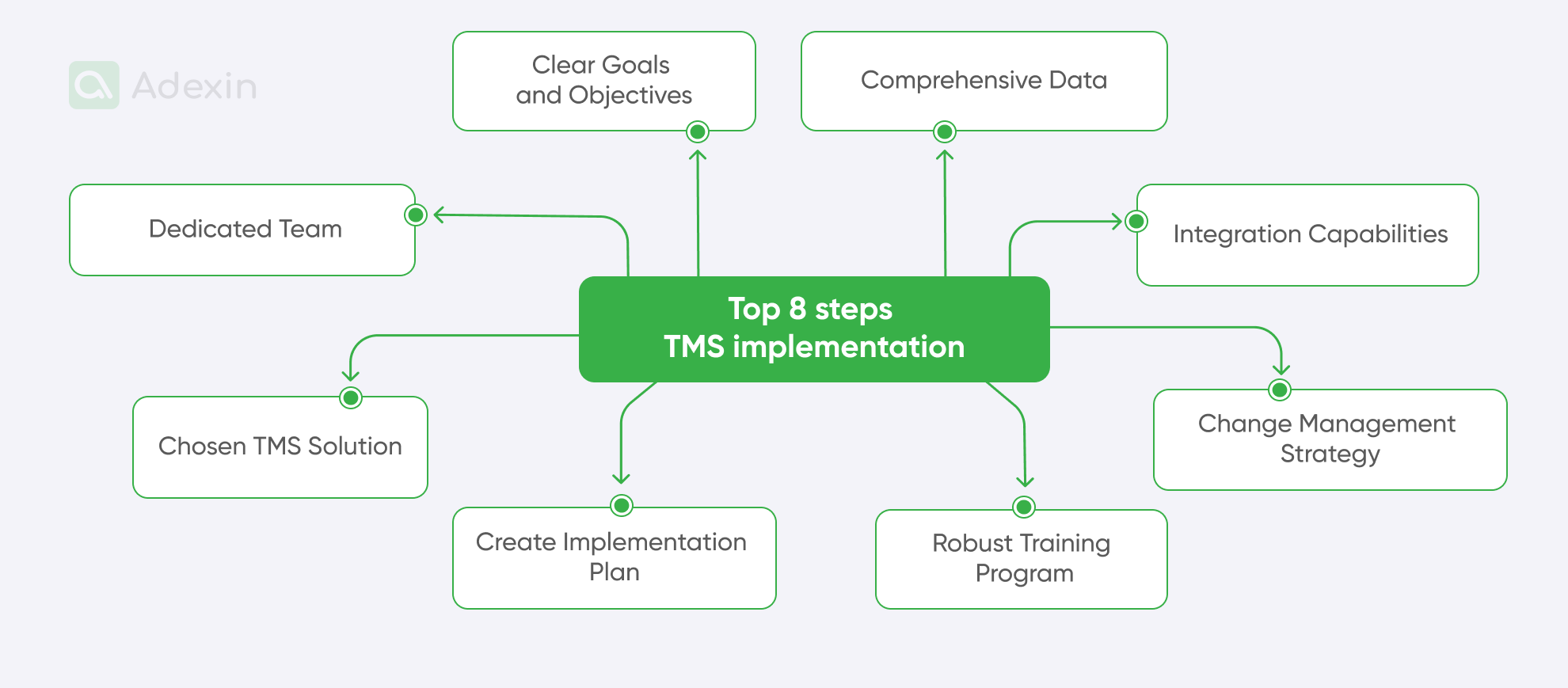
Clear goals and objectives
At this stage, you should define your specific goals for the transportation management system. However, when considering TMS logistics, it is crucial to consider how you can integrate your transport operations with warehousing.
Comprehensive data
The next step is to gather accurate and up-to-date transportation data on your shipments, carriers, and customers, validate customer demands, and other relevant information about warehouse and logistics operations. You need a broader picture of how you would like to integrate the transportation and warehouse management system.
Dedicated team
The third step is to assemble a cross-functional team with representatives from operations, IT, finance, and other relevant departments. At this point, you should assign clear roles and responsibilities to each team member.
Chosen TMS solution
Select a transportation management system TMS solution that aligns with your business needs, budget, and growth plans. From our perspective, the most effective solution is custom software development. In addition to it, you should consider factors like scalability, customization options, and integration capabilities.
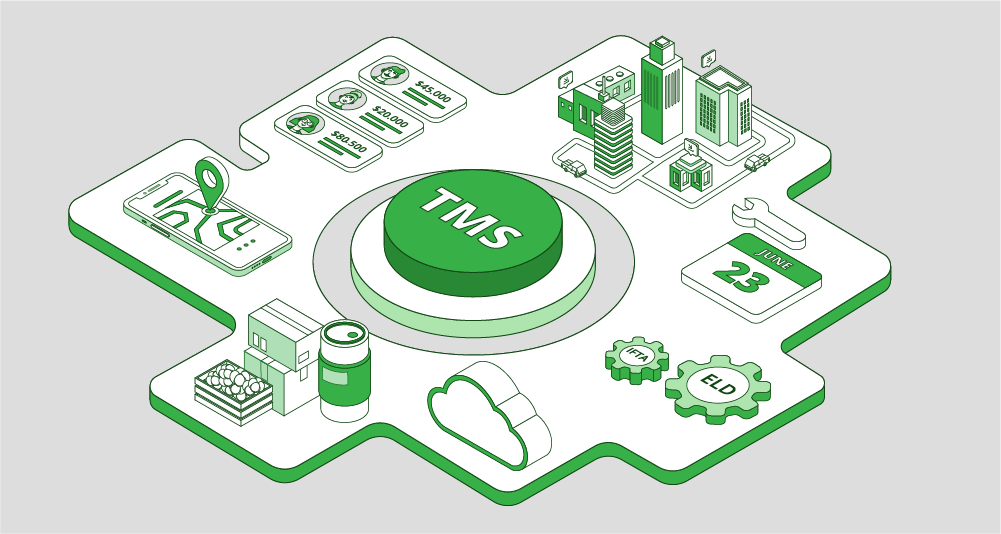
Create an implementation plan
You must create the roadmap and focus on a comprehensive implementation plan outlining timelines, milestones, and resource allocation. Break down the project into manageable phases to ensure smooth progress.
Robust training program
At point six, you need to think about how to train your team on the TMS features and teach your staff about the functionalities and best practices. Logistics teams should also see many benefits, as the TMS system should outline automated and manual processes in the warehouse. Offer ongoing training and support to maximize user adoption and efficiency.
Integration capabilities
If you already have a WMS system, you can ensure seamless integration. So, whether it is an ERP, Order Management, or E-Commerce solution for an online store, the TMS system should have a window allowing easy connection. It will enable smooth data flow and avoid manual data entry.
Change management strategy and post-implementation support
When developing a change management plan to address potential resistance and ensure a smooth transition, it's crucial to prioritize clear and effective communication with stakeholders. Address their concerns proactively, ensuring they feel informed and involved.
Are you in search of a reliable tech partner?
Adexin can help with advanced logistics solutions
Contact usFinale takeaway
In summary, integrating intralogistics and transportation management through a robust TMS system is necessary for modern logistics and supply chain operations. Thinking that a TMS software system is only about optimizing route planning and helping with carrier booking might be misleading.
TMS system can enable your company to streamline its supply chain, reduce costs, and improve customer satisfaction like no off-the-shelf solution can. Contact us today to learn more. We offer free consultations and provide solutions for companies in the US, EU, and other markets.
We look forward to hearing from you!

